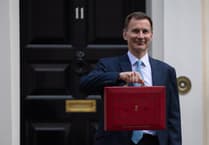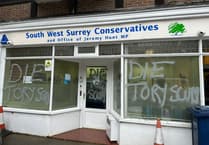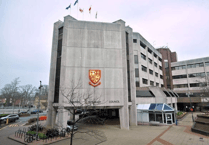WE may not be able to celebrate Bonfire Night this year as we usually do. But we can look back at nights of hooliganism and rebellion in Chobham on November 5th and how, in 1863, the event started to become regulated.
Following failed attempt by Guy Fawkes to blow up the Houses of Parliament in 1605, the event has been marked across Britain with bonfire parties and fireworks. However, by the early 1800s the tradition was declining somewhat.
A revival came about with societies forming in towns and villages to organise the annual event. But despite this, by the mid-19th century many were becoming increasingly boisterous and mischievous.
This was the case in Chobham and probably made worse as, for a time, it did not have a so-called bonfire society attempting to keep it reasonably safe and free from trouble.
Back copies of local newspapers hold the key to Chobham’s Bonfire Nights, as Mark Coxhead has discovered on microfilm copies of newspapers at the Surrey History Centre.
He says: “It appears that civil disobedience each November 5th was tolerated by Chobham’s two police officers with forbearance and patience. Young men would let off steam with behaviour that can only be described as raucous and rebellious.
“People used to light a large bonfire in the centre of the road outside St Lawrence Church in High Street, arbitrarily removing fences of nearby properties to burn on it. In 1862, the disruption culminated with an attempt to burn the village stocks and the ‘round house’.”
This was presumably Chobham’s lock-up building used to confine or restrain temporarily those accused of committing a criminal act.
As reported in a newspaper called the West Surrey Times in 1863, a committee of local young men was formed to regulate and organise the event under the title of the Chobham Bonfire Boys.
They collected subscriptions to finance the building of bonfires to burn effigies, but with the specific intention to preserve peace, law and order. Mark adds that, although it is clear from reading the newspaper reports that during the evenings of 5 November in those years a sensational drama that was grotesque rather than picturesque unfolded. I
The event started with a procession along High Street and the participants were disguised in face masks and dressed in fancy colourful costumes carrying lit torches. Spectators would throw missiles at those in the procession. So not that orderly!
At the front of the procession was the “Captain”, dressed as a field officer but with the appearance of a chevalier from the Middle Ages, followed by a brass band from Wokingham. There were then various Guys, torch, standard and banner bearers, several lighted tar barrels, and two effigies – one of which was usually the Pope.
The Guys and effigies were ceremoniously burned on a large bonfire in a field owned by a Mr Fladgate, and it was reported the participants would “feverishly dance around”.
Chobham’s community Guy Fawkes celebrations were revived in the 1970s with a large bonfire and fireworks display on the edge of the common at Burrow Hill. Echoing the past, it was preceded by a procession of villagers carrying flaming torches which started in the village.
The event outgrew the site and moved to the local rugby club’s ground. As one of the biggest annual firework displays in the area, it attracts around 2,000 people – all, of course, very well behaved.




